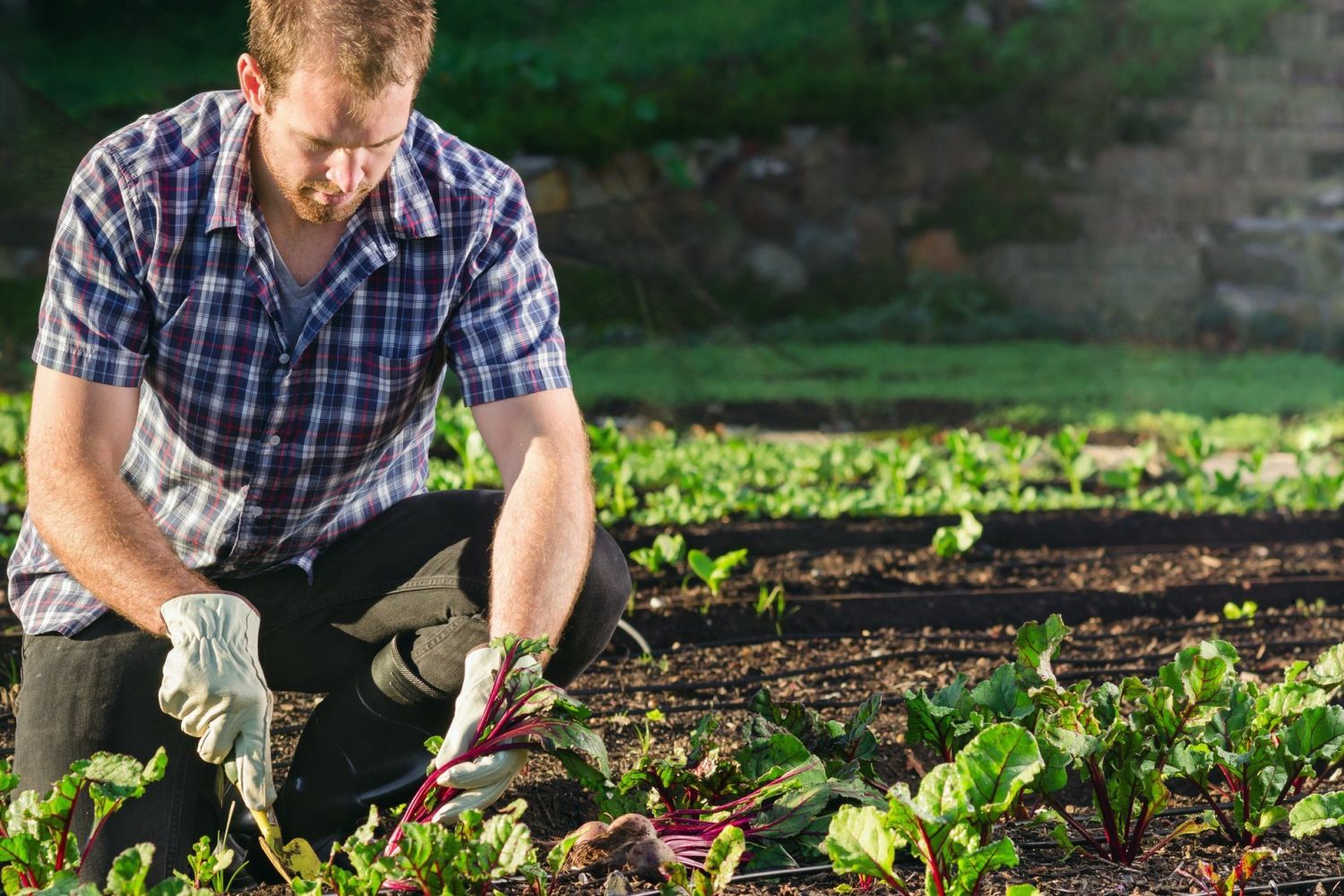Mixed cultures
Anyone who has tried their hand at a vegetable patch knows a thing or two about how some plants just can’t get along. It is no different with us humans.
With plants, however, it has almost symbiotic functions.
Some plants benefit each other, keep pests at bay, attract beneficial insects, or help pollinate by attracting bumblebees and bees. In permaculture, in addition to the use of mixed crops, one relies on permanently covered soil. This is already in the term: permaculture requires permanently covered soil, if possible all year round. This means that herbs are also allowed to move into the bed, and shrubs, perennials and trees can be found in close proximity. However, since not every plant gets along well with the other, special attention must be paid to neighbor constellations when laying out your garden and beds. You can find an overview of good and bad neighbors here:
Good Neighbors:
- Potatoes: broad beans, spinach, kohlrabi
- Cucumbers: peas, beans, fennel, leek, cabbage, beet, lettuce, celery, onions, dill
- Tomatoes: Cabbage, kohlrabi, bush beans, parsley, lettuce, spinach, celery, zucchini, basil
- Lettuce: cucumbers, peas, strawberries, radishes, radishes, cabbage, kohlrabi, leeks, carrots, rhubarb, beet, salsify, onions, tomatoes, bush beans, runner beans,
- Lamb’s lettuce: strawberries, radishes
- Kohlrabi: cucumbers, tomatoes, onions, bush beans, runner beans, peas, potatoes, beet, leeks, radishes, lettuce, celery, spinach
- Zucchini: tomatoes, peas, runner beans, onions
- Chard: cabbage, bush beans, carrots, radishes, radish
- Peas: cucumbers, fennel, radishes, radish, carrots, lettuce, zucchini, cabbage, kohlrabi,
- Beans: Cucumbers, tomatoes, potatoes, cabbage, kohlrabi, strawberries, chard, lettuce, radishes, radish, rhubarb, beet, celery, savory.
- Onions: cucumbers, strawberries, lamb’s lettuce, kohlrabi, leeks, carrots, lettuce, celery, beet, zucchini
- Cauliflower: beet, celery, spinach, bush beans, peas, cucumber
- Head cabbage: tomatoes, bush beans, runner beans, peas, leeks, chard, radishes, radish, rhubarb, beet, lettuce, celery, spinach
- Radish/radish: tomatoes, chard, carrots, leeks, lettuce, spinach, bush beans, runner beans, peas, kohlrabi
- Carrots: Tomatoes, radish, lettuce, onions, peas, leeks, chard, radishes.
- Leeks: cucumbers, tomatoes, strawberries, cabbage, kohlrabi, carrots, lettuce, celery
- Spinach: tomatoes, strawberries, potatoes, cabbage, kohlrabi, radishes, radish, rhubarb, runner beans
- Celery: cucumbers, tomatoes, bush beans, cabbage, kohlrabi, leeks, runner beans
- Fennel: cucumbers, peas, lamb’s lettuce, lettuce, celery
- Rhubarb: bush beans, cabbage, lettuce, spinach.
- Strawberries: Bush beans, leeks, onions, radishes, radish, lettuce, spinach
- Beet: cucumbers, bush beans, savory, dill, garlic, onions, cabbage, lettuce
Bad neighbors:
- Cucumbers: tomatoes, radishes, radishes, potatoes.
- Cauliflower: garlic, onions
- Carrots: Beet, mint
- Tomatoes: Blue cabbage, peas, fennel, cucumbers, potatoes, beet
- Peppers: peas, fennel, beet
- Potatoes: cucumbers, peas, onion, pumpkin, beet Tomatoes, , celery, sunflower
- Zucchini: cucumber
- Eggplant: peppers, tomatoes, potatoes
- Garlic: peas, runner beans, cabbage, bush beans
- Onions: beans, peas, potatoes, cabbage, leeks
- Lettuce: celery, cress, parsley
- Peas: beans, potatoes, garlic, leeks, tomatoes, onion
- Bush beans: peppers, leeks, chives, onions, peas, runner beans, fennel, garlic
- Strawberries: all types of cabbage
- Runner beans: Fennel, peas, garlic, peppers, bush beans, , leeks, chives, onions.
- Cabbage: other types of cabbage, garlic, kohlrabi, chives, potatoes, onion
- Kohlrabi: cabbage, fennel
- Parsley: all types of lettuce
- Fennel: tomato, kohlrabi, beans.
So avoid attracting pests by unfavorable neighborhoods or hindering growth, and provide plants with favorable environments to get the best possible start and long-term healthy plants.
Soil quality should not be neglected either. For here, too, look at the neighbors and keep the soil covered as permanently as possible. You won’t need to spend hours sitting in the beds removing pesky weeds. Courage to grow wild! After all, plenty of weeds are useful to the surrounding plants, helping to improve the soil or retain moisture in the soil. Just make sure that some very proliferating comrades do not get out of hand. In our garden, for example, nettles feel particularly well. We often use them for cooking or to prepare hair treatments or slurry, however, we have so much of them that they like to dominantly displace the others in some places. However, we do not agree with this, despite having the courage to grow wild, and so they have to give way from our beds and we have given them their own limited beds to sprawl. It is always advisable to use borders such as paths or clear bed boundaries for plants that are proliferating strongly, so as to avoid encroachment into the neighboring bed. In other locations, it may be other plants and one should keep in mind what might not be obstructive to others in which location, even though nature would have designed it that way itself. The permaculture we live on our farm requires a patient, observant eye. So there are no clear guidelines about which plants should grow where, you should have enough patience and understanding and just observe. And if you wait a bit, you will soon see that plants will grow by themselves that you would not have expected. So a permaculture garden is full of surprises! And if you see plants that are not on the list above, leave them and see if they get along. Precisely for the reason that there are strong differences of location and climate, we have not included wild herbs and trees in our list, also many perennials and shrubs are missing.
For trees, however, it can be stated that alders are useful in the immediate vicinity of fruit trees, and nut trees are more likely to hinder the growth and health of fruit trees.
To maintain a healthy garden, avoid monocultures and give the soil some variety. To keep the soil permanently covered, mulching is a good idea, especially in the colder months. So you can use different types of mulching to keep the soil covered when helping plants are not yet present or not desired. And fertilize your soil only with natural green manure, compost or MicroVeda microorganisms. Do not use chemical substances in the whole area of your habitat, it harms plants, humans and animals. Some plants, such as comfrey or lupines, are very helpful in improving the soil. They are capable of changing the soil texture from infertile to very fertile. This requires a little time, but it works. So, in the first year of creating a new bed section, we first prepare the soil with such soil improvers and only in the 2nd or 3rd year we sow the seeds or seedlings for our bed. Lawns or pure sandy areas can also be prepared in this way.
If you provide a habitat for many different plants, so they can eventually use for themselves. Not only beautiful to look at and a future opportunity for nature, but also self-sufficiency on a small to large scale can offer you permaculture. Depending on the size of your beds or the variety of uses, you can be largely self-sufficient or even earn money with it. Create great recipes or preserved treats from fruits, herbs and vegetables. Choose for yourself which portion you want to eat fresh and which you want to freeze, preserve or otherwise process. In this way, you can also conjure up tasty treats that you can even give away or sell with a pretty label. It is important not to get lost in one ingredient, but to develop your garden into a colorful Garden of Eden that is fertile, easy to care for, beautiful, wild, diverse, colorful and patient.


